|
Have a safe day!
Thursday, Sept. 27
2:30 p.m.
Theoretical Physics Seminar - Curia II
Speaker: Chiu-Tien Yu, University of Wisconsin, Madison
Title: The Shape of Light Stops
3:30 p.m.
DIRECTOR'S COFFEE BREAK -
2nd Flr X-Over
THERE WILL BE NO ACCELERATOR PHYSICS AND TECHNOLOGY SEMINAR TODAY
Friday, Sept. 28
3:30 p.m.
DIRECTOR'S COFFEE BREAK - 2nd Flr X-Over
4 p.m.
Joint Experimental-Theoretical Physics Seminar - One West
Speaker: Markus Klute, Massachusetts Institute of Technology
Title: A Future Higgs Factory: CMS at LEP3
Click here for NALCAL,
a weekly calendar with links to additional information.
Upcoming conferences |
|
Thursday, Sept. 27
- Breakfast: sausage gravy omelet
- Green pork chili
- Greek chicken salad
- Mom's meatloaf
- Smart cuisine: Finger-lickin' oven-fried chicken
- Surfside tuna melt
- Crispy buffalo chicken wrap
- Bacon cheeseburger pizza
Wilson Hall Cafe Menu |
|
Friday, Sept. 28
Dinner
Closed
Wednesday, Oct. 3
Lunch
- Roast pork with apple salsa
- Roasted autumn squashes
- Braised red cabbage
- Plum tart with cream chantilly
Chez Leon Menu
Call x3524 to make your reservation.
|
|
Road closed to all vehicular, bicycle and pedestrian traffic
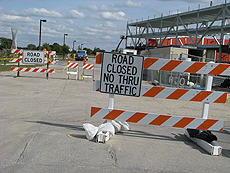 |
| For the safety of all, please observe the road closure signs on Road D whether you are on foot, on a bicycle or in a vehicle. |
To ensure the safety of employees, visitors and contractors during the construction of the IARC building, the road in front of the Industrial Complex and CDF has been and continues to be closed to vehicles, bicycles and pedestrians until steel erection is complete. Improved signs and barricades notify pedestrians and bicyclists that they also must detour around the area.
|
Ryuji Yamada retires this week
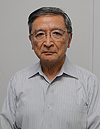 |
|
Ryuji Yamada
|
When newly appointed Director Bob Wilson invited Ryuji Yamada to participate in the 1967 summer workshop in Oak Brook to design what would become Fermilab, Ryuji was already experienced both in executing particle physics experiments and in building and testing accelerator magnets. He has continued to pursue both fields since joining the National Accelerator Laboratory in March 1968 as employee number 114. Ryuji retires Friday.
Ryuji recalls with fondness the exciting days of building the Main Ring. The goals were challenging and the setbacks were many, but with hard work and ingenuity the Main Ring team pushed through and brought the project to completion on time and under budget. He is especially proud of the magnet designs, which CERN directly copied in building the Super Proton Synchrotron.
His first experiments here were a series of internal target experiments at CZero, led by scientist Ernie Malamud, that included a pioneering collaboration with the USSR’s JINR.
With the Main Ring complete, Ryuji entered the R&D effort on superconducting magnets, studying niobium-titanium strands, making model magnets and building the Magnet Test Facility. Merging his interests, he promoted the Japanese contribution of a superconducting solenoid for CDF and, later, their construction of one for DZero.
In recent years Ryuji has contributed to the development of both Nb3Sn and
Nb3Al superconductors for accelerator magnets, as well to DZero searches for the top quark and Higgs boson.
Colleagues also know Ryuji for his dedication to mentoring students. He finds top students, defines excellent magnet modeling projects for them, guides them expertly and learns from them.
Though he retires this week, Ryuji plans to continue his search for the Higgs boson in the DZero data.
“I have really enjoyed working at Fermilab, together with many excellent physicists, engineers, technicians, other staff and students at each stage,” he said.
—David Harding, Technical Division
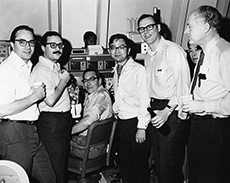 |
|
Ryuji Yamada and fellow scientists congregate in the National Accelerator Laboratory 200-BeV control room in 1972. From left, they are Dave Sutter, Sandro Ruggiero, Frank Cole, Ryuji Yamada, Jim Griffin and Stan Snowdon. Photo: Fermilab
|
|
Now accepting applications for Fermilab Wilson Fellowship
The Wilson Fellowship at Fermilab seeks applications from Ph.D. physicists of exceptional talent with at least two years of postdoctoral experience. The fellowship is awarded on a competitive basis and is intended to support strong, assistant professor-level physicists early in their careers. It provides unique opportunities for self-directed research in experimental physics through work on the Fermilab particle physics experiment of the candidate's choice. The Fermilab experimental program includes collider physics, studies of neutrino, muon and astroparticle physics, as well as R&D and planning for experiments at future colliders and high-intensity beams.
The Wilson Fellowship provides an annual salary fully competitive with a university assistant professorship. The appointment is for an initial term of three years and there exists the possibility for renewal for an additional two years upon completion of a successful review after the first two years; thereafter, the potential exists for eventual appointment without term limit.
For information on how to apply, visit the position application Web page. The application deadline is Friday, Oct. 26, 2012.
Additional information is available at the Wilson Fellowship Web page. Questions may be submitted via email to wilson_fellowship@fnal.gov.
|
Open-access deal for particle physics
From Nature News, Sept. 24, 2012
The entire field of particle physics is set to switch to open-access publishing, a milestone in the push to make research results freely available to readers.
Particle physics is already a paragon of openness, with most papers posted on the preprint server arXiv. But peer-reviewed versions are still published in subscription journals, and publishers and research consortia at facilities such as the Large Hadron Collider (LHC) have previously had to strike piecemeal deals to free up a few hundred articles.
After six years of negotiation, the Sponsoring Consortium for Open Access Publishing in Particle Physics (SCOAP3) is now close to ensuring that nearly all particle-physics articles — about 7,000 publications last year — are made immediately free on journal websites. Upfront payments from libraries will fund the access.
Read more |
|
Do the top quark and the Higgs boson have a special relationship?
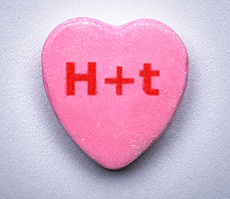 |
| Particles in love. |
The Higgs boson gives mass to fundamental particles, and so it likes to interact the most with the most massive particles. The top quark, discovered by CDF and DZero in 1995, is the most massive fundamental particle known, and its large mass could indicate that it has a special relationship with the Higgs boson. If so, learning about that relationship will be one of the most important tasks in understanding the Higgs boson and how it produces mass. One way to investigate this is to look at how often a Higgs boson appears in collisions that produce top quarks. The Standard Model predicts how often this should occur, and any new interaction between the Higgs boson and the top quark could alter that rate.
The CDF group at The Ohio State University has performed a
pioneering search for Higgs bosons in events with top quarks. This search builds on previous CDF analyses by applying techniques developed in top quark studies and in other Higgs searches. The presence of the distinctive top quark pair sets this Higgs search apart by allowing us to include all the decay modes of the Higgs boson. Other Higgs searches employ only one decay mode, so this new technique boosts the sensitivity of this analysis.
We use the entire CDF data set and select events with a signature that includes a lepton, jets and missing transverse energy. These events are subdivided according to the number of jets and b-tagged jets in order to maximize sensitivity to the Higgs signal, and we employ an advanced mathematical technique to determine which events are most similar to Higgs events.
Although we do not observe anything unexpected, we are able to put limits on how often top quark events also contain a Higgs boson and so constrain how special the relationship between the Higgs boson and the top quark might be.
Learn more
—edited by Andy Beretvas
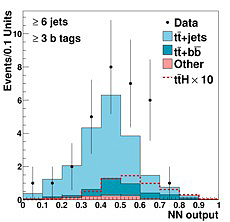 |
| The figure shows the results for data and simulations
that have six or more jets and three or more b-tagged jets.
The signal model is for a Higgs of mass 125 GeV/c2.
|
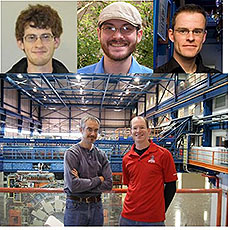 |
| These CDF physicists contributed to this data analysis. Top row from left: Jake Connors (now at Harvard University),
Jon Wilson (now at University of Michigan), Homer Wolfe (The Ohio State University). Bottom row from left: Brian Winer and Richard Hughes, both from The Ohio State University.
|
|
NUMI at night
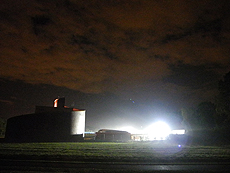 |
Richard Meaderdes Jr., BSS, took this nighttime photo of the NUMI construction site from Pine Street.
|
|
Signature of long-sought particle that could revolutionize quantum computing seen by Purdue physicist
From Purdue News, Sept. 25, 2012
WEST LAFAYETTE, Ind. - A Purdue University physicist has observed evidence of long-sought Majorana fermions, special particles that could unleash the potential of fault-tolerant quantum computing.
Leonid Rokhinson, an associate professor of physics, led a team that is the first to successfully demonstrate the fractional a.c. Josephson effect, which is a signature of the particles.
"The search for this particle is for condensed-matter physicists what the Higgs boson search was for high-energy particle physicists," Rokhinson said. "It is a very peculiar object because it is a fermion yet it is its own antiparticle with zero mass and zero charge."
Read more |
|